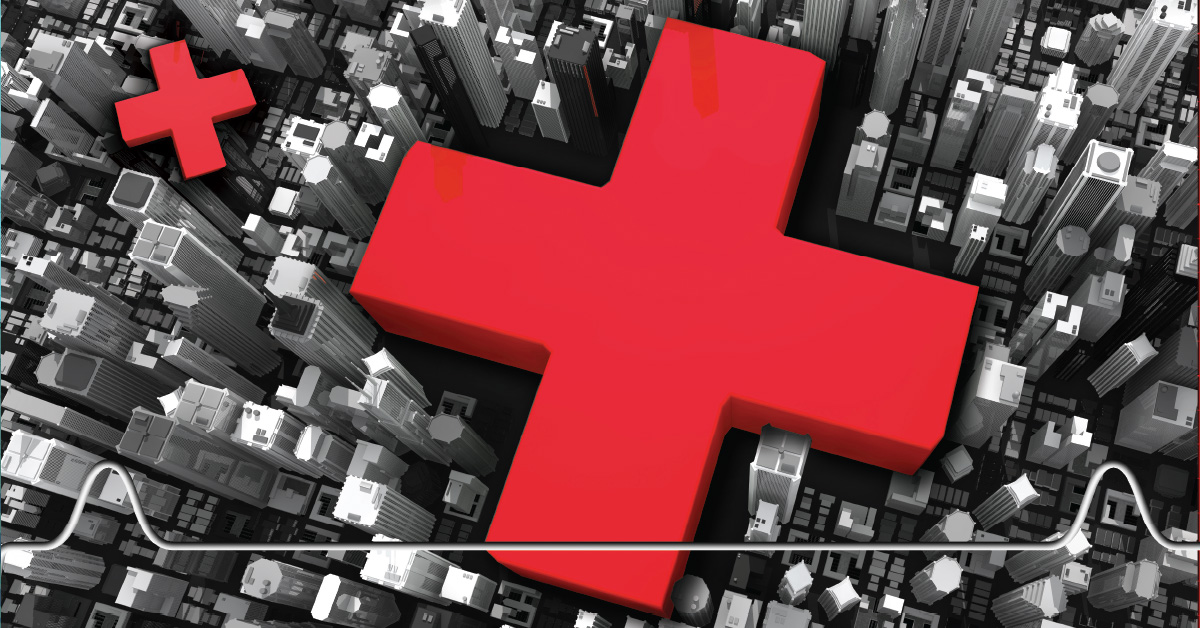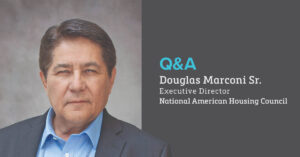The medical office building (MOB) market has grown exponentially in recent years, creating an unprecedented opportunity for real estate investors, medical practitioners and commercial mortgage brokers alike to secure a piece of the action.
New medical facilities are opening at a rapid pace across the United States — and to great success. Vacancies in existing facilities were at a record low of 7.3 percent at the end of 2017. About 35.7 million square feet of new MOBs started or completed construction in 2016, with the average rental rate commanding an impressive $24 per square foot.
Along with the growth of the MOB market, the locations of MOB properties are changing as well. There is a shift away from locating MOBs in traditional, out-of-the-way facilities.
Instead, many MOBs are now being established in shopping plazas and other areas that are more convenient for patients. This allows patients to run errands, do some shopping or maybe grab lunch before or after appointments.
What does this mean for real estate investors and mortgage brokers? A successful investment requires a keen understanding of the many factors driving the growth of the MOB market across the United States.
Market drivers
The growth of the MOB market can be attributed to changes in how health care is administered, as well as shifting demographics. At the center of this growth is the increased popularity of walk-in urgent-care centers and outpatient facilities.
Urgent-care centers take the burden off hospital emergency rooms by addressing wound treatment, broken bones and other immediate health needs that can’t wait for a next-day doctor’s appointment, yet aren’t life-threatening enough to warrant a trip to a ER. These urgent-care facilities also administer vaccines, fill prescriptions, and perform lab work and wellness checks, all without an appointment or long wait times.
There are more than 7,500 urgent-care centers in the U.S., according to the Urgent Care Association of America. Kalorama Information estimates the average facility treats some 300 patients per week and is expected to take in annual revenue of about $1.7 million by 2021. These urgent-care outlets also are more cost-efficient to operate than hospital-based facilities, given many are housed in spaces encompassing as little as 1,500 square feet and are outfitted with less-expensive medical equipment such as X-rays — rather than the far more costly CT or MRI imaging machines found at hospital-based facilities.
Extended operating hours, which are often far more favorable than a traditional doctor’s office, make urgent-care centers a patient favorite. Large corporations have taken notice in recent years, with major players such as CVS Health entering the market with their acquisition of Aetna. Large hospital networks also have been opening urgent-care centers that operate as affiliates of their systems. As a result, smaller health care networks and independent doctors find that they need to catch up, with some opening up their own urgent-care clinics to attract and retain patients.
Outpatient health care facilities take a similar approach as urgent-care centers and perform tests and procedures that do not require an overnight hospital stay. That frees up space in hospitals for patients with more serious needs. Cheaper to build than hospitals and with much lower operating costs, outpatient facilities comprise a significant portion of the growing MOB market, with 2016 construction values for that market estimated at about $7.7 billion.
There’s no shortage of patients either. People are living longer, driving the need for more health care facilities. According to the U.S. Census Bureau, the number of people age 65 and older is expected to nearly double between 2012 and 2050, from 43.1 million to 83.7 million. The Affordable Care Act’s implementation also has extended health coverage to about 32 million people, increasing the number of Americans seeking out health care. This means millions of potential new patients are in need of exams, tests and procedures — and all of them need a place to go.
It’s clear from these trends that MOBs in highly desirable locations make for sound investments for real estate developers, medical professionals and other investors. The MOB market also represents a major opportunity for commercial mortgage brokers and the clients they serve. The question, then, is how to dive in quickly.
Funding challenges
Applying for a loan is a typical part of the real estate acquisition process, but it’s a task that may be completely unfamiliar to medical professionals who wish to invest in the growing market for urgent-care or outpatient facilities. This is where a knowledgeable commercial mortgage broker can help.
Navigating the loan-application process can be dizzying. Traditional lenders will require massive amounts of information to approve an application — such as tax returns, financial statements and details about the property developer, if there is one. Traditional lenders also will require information about the medical practice itself, inquiring about affiliations with hospitals and the facility’s corporate backing. Lenders also will want some sort of assurance that the proposed MOB will still be open and thriving a decade from now. Unfortunately, that means smaller medical practices and independent doctors may be crowded out of traditional financing.
It’s also important to note that a conventional lender may not consider an application based on geography alone. Conventional lenders take location into account, even though health care is needed as much in a town of 10,000 residents as it is in a city of 100,000. When traditional lenders fund loans for MOBs, they are likely to focus on major metropolitan areas, with leases backed by large companies, rather than small-town facilities leased by independent doctors.
Private-lender simplification
Three items are necessary for a loan application with a direct private lender — a clean title report, a clean environmental report and an up-to-date appraisal. A private lender can thoroughly assess an application with those three essential elements in order.
The lender simply wants to know the property’s current value and what it will be worth after renovations, if applicable. This simplified process makes it easy for medical professionals to apply for a loan, even if they don’t have prior experience with real estate or acquisition funds.
Direct private lenders can be flexible with factors that traditional lenders normally won’t budge on. They don’t ask about hospital networks or a large corporate backing, nor do borrowers need to “prove” their facility will still be in business in a decade. The location won’t be scrutinized either: Medical professionals can open an office wherever their patients need them to be.
Most importantly, the streamlined, simplified application with a direct private lender cuts down the approval timeline from several months to a few weeks or even several days. For a mortgage broker, that time difference can be the decisive factor between securing and losing the funding your client needs. A lucrative opportunity for a medical facility in a prime location should not have to wait on a traditional lender’s delayed response.
• • •
The rapidly expanding MOB market is poised for continued growth, as long as borrowers act quickly. With tens of millions of potential customers — many of whom expect convenient locations and walk-in appointments — prime real estate becomes central to ensuring a new medical property’s success.
Placing these facilities outside of hospital campuses and traditional medical complexes is challenging the market definition of where a doctor’s office is located, opening up a multitude of options for medical professionals and real estate developers alike. When the perfect opportunity arises, funding shouldn’t hold back a borrower or their mortgage broker. Head straight to a direct private lender for a quick, simple and straightforward loan-application process.
Author
-
Edwin Urrego is an executive loan officer with Kennedy Funding Financial, a direct private lender based in Englewood Cliffs, New Jersey. Urrego is a 20-year industry veteran and is part of a team that has closed in excess of $3 billion in hard money loans to borrowers across the globe. Urrego has successfully closed property and land loans throughout the Caribbean, Europe, Canada and South America. He specializes in bridge loans for land, multifamily, retail, office and hospitality properties.
View all posts






